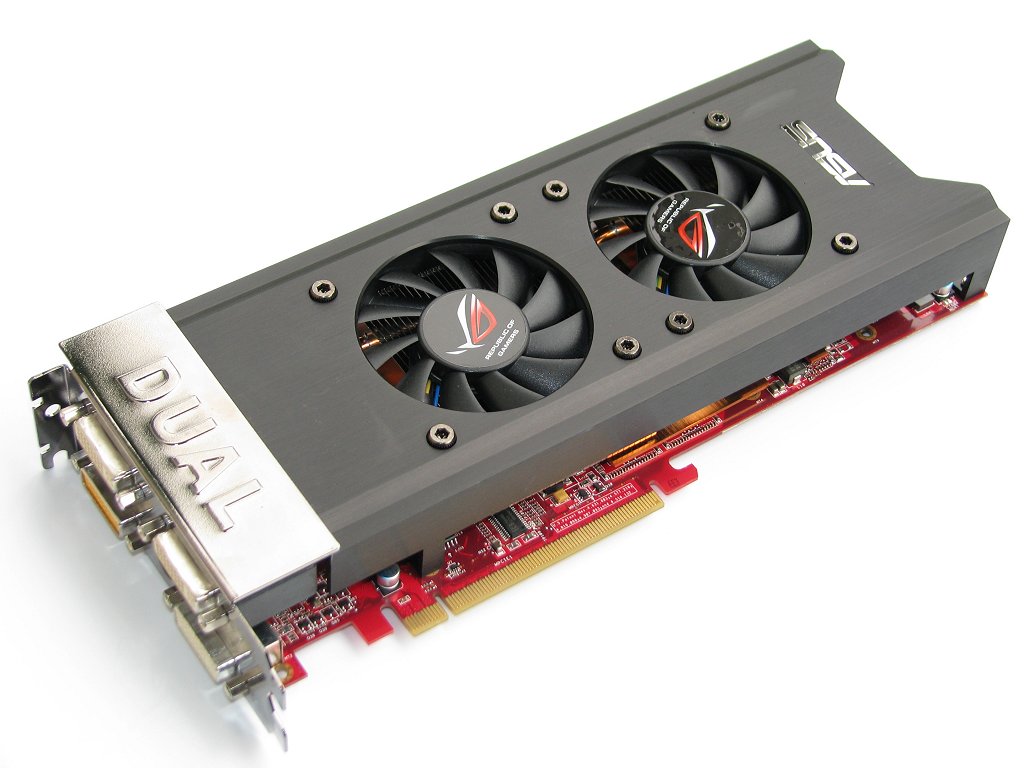The Card
Nowadays it's more usual than ever to have graphics card vendors following ATI or Nvidia reference designs, and the Radeon HD 3870 X2 is no exception with most cards out there being identical to ATI's reference design. However, in the short timespan that this product has been available, we were able to get a hold of another Radeon HD 3870 X2 card manufactured by ASUS. Improvements to this card include upgraded cooling, four DVI ports and a slightly overclocked core and memory frequencies. Other than that, the card's PCB is essentially the same.




In terms of physical dimensions the ATI Radeon HD 3870 X2 is a beast, measuring 26.5cm long which is wider than a full ATX motherboard. The card dimensions are however very similar to that of a GeForce 8800 GTX/Ultra, so we are not entering unchartered territory. The appearance of this ASUS version is a bit different to the reference design and we rather like it.


Instead of using a plastic heat shroud, ASUS has gone with a brushed black aluminum housing that features two 65mm fan holes designed to cool both on-board GPUs. Removing the shroud will expose two small arrays of aluminum fins, the second of which has slightly more fins. These fins are each connected to a copper base plate via two sets of heat pipes. Realistically this cooling setup is no more extreme than the reference design and we found it to be a little underpowered at times.

Separate from the new cooling design you will notice a large steel plate at the front of the graphics card labeled 'DUAL'. When moving around to the back plate you will discover that there are not two, but four DVI ports just as there would be with a Crossfire setup. Those seeking serious connectivity for LCD monitors will no doubt be every interested on this feature, as two cards will support eight DVI ports!


The ATI Radeon HD 3870 X2 comes with 1GB of memory (512MB assigned to each GPU). The default operating specification for this memory is 1800MHz, though ASUS has increased the frequency to 1910MHz on their TOP edition of the card. Furthermore each GPU has been designed to work at 825MHz, while ASUS has overclocked the TOP edition to 850MHz. This is only a 3% overclock per GPU, so we can only imagine they were hitting limitations inherent to the complexity of the board design.



On the upside, ASUS is using 1GB GDDR3 .8ns memory from Hynix "HY5RS123235B FP-08" memory which overclock rather well. We were able to reach 2122MHz with these modules before stability became a problem. The cores on the other hand were limited to 861MHz, which is only 11MHz higher than the already slightly overclocked speeds.
